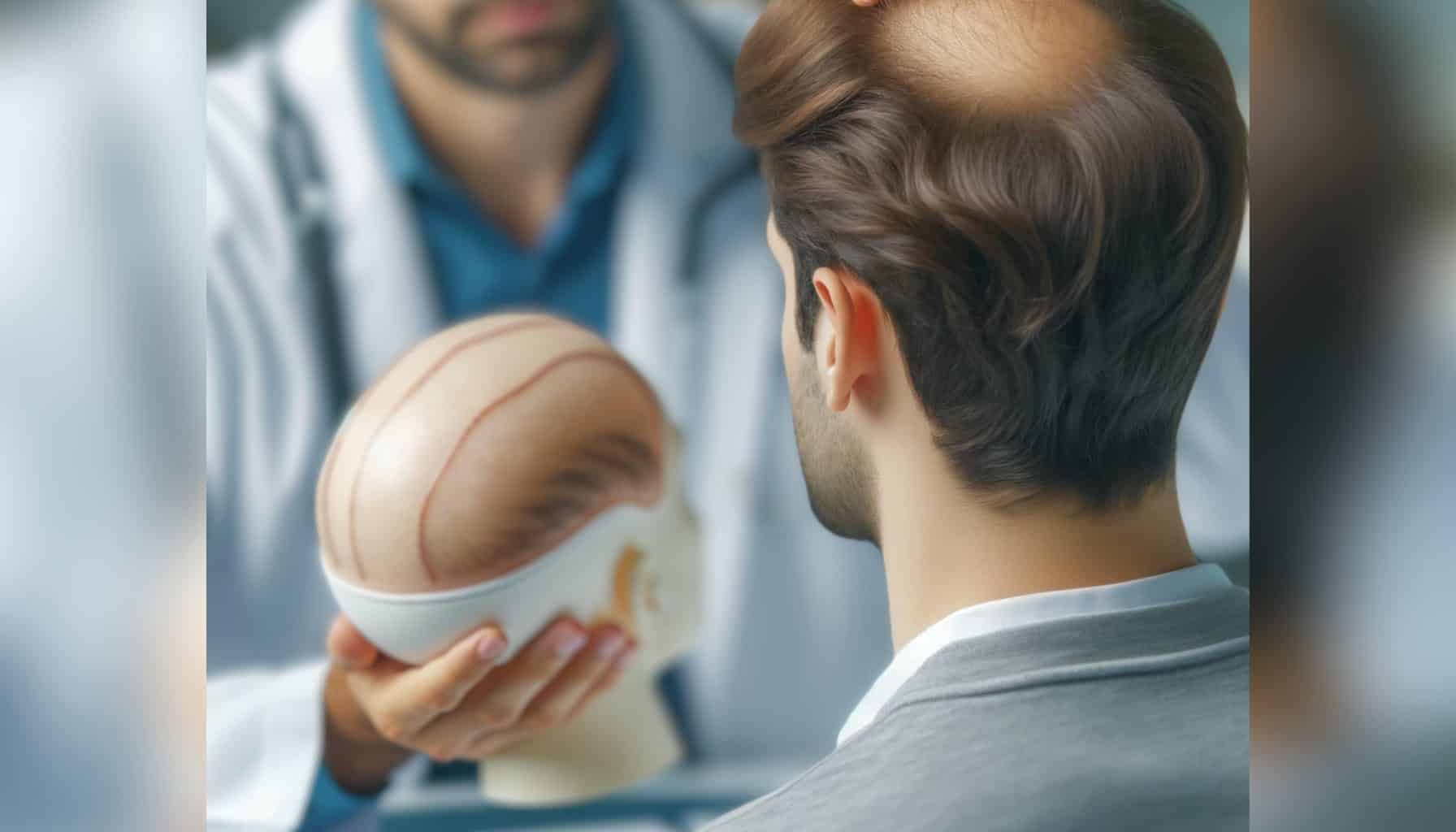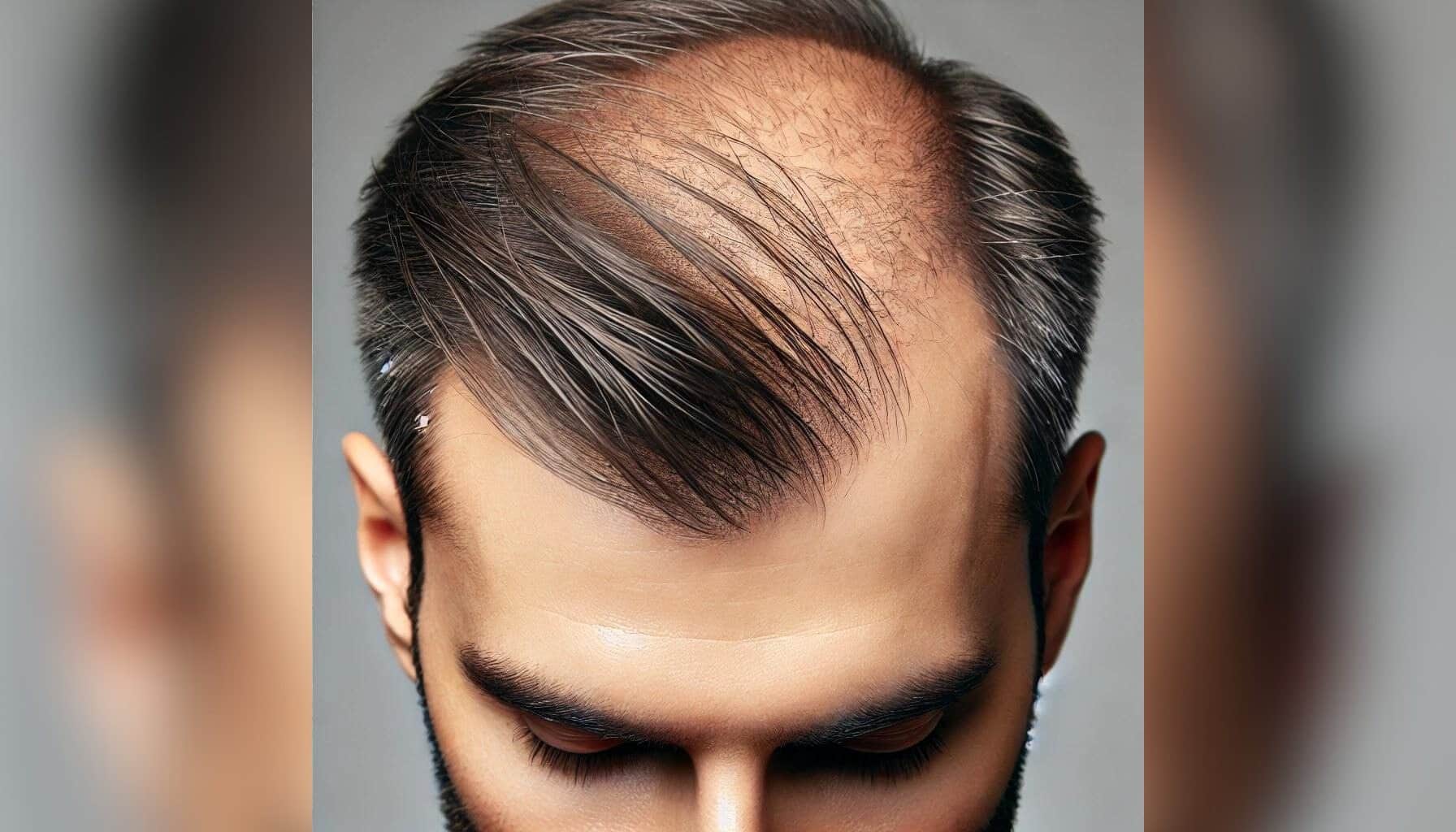
If you’re considering hair transplant surgery, it’s completely normal to feel unsure. Hair loss can impact your self-esteem, and making the decision to undergo a medical procedure to restore your hair follicles isn’t easy. There are many factors to consider, such as the hair transplant cost, whether the new hair growth will look natural, and how to find the right clinic for your needs. If you’re on the fence about hair restoration surgery, rest assured that modern hair transplant procedures are safer and more effective than ever, offering long-term solutions for thinning hair.
Let’s walk through the process, discuss what to look for in a clinic, and understand why hair transplantation might be the right answer for you.
Understanding Hair Loss
Hair loss, or alopecia, is a common issue affecting millions of people globally. It can be distressing and have a profound impact on your self-confidence, but understanding the root causes can help you find the right solution. Hair loss can result from a variety of factors, including genetics, hormonal changes, medical conditions, medications, stress, and poor diet. Another condition that can cause hair loss is alopecia areata.
What Causes Hair Loss?

The most common cause of hair loss is androgenetic alopecia, also known as male pattern baldness or female pattern hair loss. This condition is driven by the conversion of testosterone into dihydrotestosterone (DHT), which causes hair follicles to shrink, eventually leading to permanent hair loss. Other contributing factors include:
Genetics: Family history plays a significant role in hair loss.
Hormonal Imbalances: Changes in hormones, such as those during menopause or pregnancy, can trigger hair loss.
Medical Conditions: Disorders like thyroid disease, autoimmune diseases, and certain skin conditions can lead to hair loss.
Medications: Some drugs used for treating depression, high blood pressure, and cancer may cause hair loss as a side effect.
Stress: Both physical and emotional stress can lead to temporary hair shedding.
Poor Diet: Deficiencies in essential nutrients like iron, zinc, and biotin can contribute to hair loss.
By understanding these causes, you and your healthcare provider can develop a targeted treatment plan to address your specific type of hair loss.
Thinning Hair: A Common Problem
Thinning hair is a widespread issue that affects millions of people globally. Whether it’s due to genetics, hormonal imbalances, stress, or certain medical conditions, the impact on one’s self-esteem and confidence can be significant. For many, thinning hair is more than just a cosmetic concern; it’s a source of distress and embarrassment. Fortunately, there are numerous effective hair loss solutions available today. From surgical options like hair transplantation and hair restoration surgery to non-surgical treatments such as exosome scalp injections and stem cell scalp injections, there are various ways to combat thinning hair and restore your confidence.
How Common is Hair Loss?
Hair loss is incredibly common, affecting millions of people worldwide. According to the American Academy of Dermatology, approximately 80 million men and women in the United States alone experience some degree of hair loss. It affects people of all ages, sexes, and ethnicities, making it a universal concern.
Hair Transplant Basics
A hair transplant is a surgical procedure designed to move hair follicles from one part of the body to another, typically to restore hair growth on the scalp. However, this procedure isn’t limited to the scalp alone; it can also be used to enhance hair growth in other areas such as the eyebrows, beard, and mustache. By redistributing hair follicles, a hair transplant can provide a natural-looking solution to hair loss, helping you achieve fuller, thicker hair where you need it most.
What is a Hair Transplant?
A hair transplant involves relocating hair follicles from a donor site, usually the back and sides of the head where hair is more resistant to balding, to a recipient site where hair is thinning or balding. The procedure is typically performed under local anesthesia and can take several hours to complete, depending on the extent of the transplant. Each hair follicle is carefully extracted and implanted to ensure the best possible growth and natural appearance.
The Importance of Choosing the Right Hair Restoration Clinic
Selecting the right clinic for your hair transplant is a crucial decision. When considering options like FUE hair transplant, it’s essential to choose a clinic that specializes in the procedure to ensure the best possible results. Reputable clinics like Best Hair Transplant ensure patient safety and provide natural-looking results. Many people are tempted by lower-cost clinics abroad, but these can come with significant risks.
Clinics offering drastically cheaper hair transplants often cut corners in critical areas like donor area management, scalp health, or patient education. The Key to getting the best deal is not just looking at the cost, but looking into the clinic; how long its been around, reviews, there team, their expertise. At Best Hair Transplant, we have the best of both world. The best cost and the results. To avoid complications such as infections, shock loss, or other adverse effects, it’s important to select a clinic that specializes in surgical hair restoration techniques.
Red flags to watch out for include:
Vague pricing
Lack of certifications
Minimal at-home care instructions
The best clinics provide comprehensive support, from the initial consultation to post-procedure care.
Hair Transplant Options
When it comes to hair restoration, several methods are available, each with unique advantages, particularly concerning the ‘donor area’. Understanding these options will help you make an informed decision about which hair transplant procedure is best suited for your needs.
Hair Transplant Methods
Follicular Unit Transplantation (FUT): This traditional method involves removing a strip of hair-bearing skin from the back of the head and transplanting it to the balding area. It’s effective for covering large areas of hair loss and involves the transplantation of multiple hair grafts.
Follicular Unit Extraction (FUE): A minimally invasive technique that extracts individual hair follicles from the donor area and transplants them to the thinning areas. This method leaves minimal scarring and is ideal for those seeking a natural appearance.
Body Hair Transplantation: For those with insufficient scalp donor hair, this method involves using hair from other parts of the body, such as the chest or beard, to fill in balding areas.
Consulting with a qualified hair restoration surgeon is crucial to determine the best method for your individual needs and goals. Each technique offers unique benefits, and a professional can guide you toward the most effective solution for achieving natural-looking, long-lasting results.
Who is a Good Candidate for Hair Transplantation?
A good candidate for hair transplantation is someone who has a sufficient amount of donor hair to achieve the desired results. Ideal candidates should also have realistic expectations about the outcome and be in good overall health. Hair transplantation is often recommended for individuals who have tried other hair loss solutions without success. Whether you’re dealing with male pattern baldness, female hair loss, or other conditions causing thinning hair, a consultation with a qualified hair restoration surgeon can help determine if this procedure is right for you.
Hair Transplantation Procedure: What to Expect
If you’re nervous about hair transplant surgeries, it’s important to know that modern hair transplantation surgery is a minimally invasive process. The primary focus is on the careful handling of each hair follicle to ensure successful hair regeneration.
FUE vs. FUT: Which is Right for You?
FUE hair transplant: Involves extracting individual hair follicles from the donor area and transplanting them to thinning areas of the scalp. This technique leaves minimal scarring and is ideal for patients who desire a natural appearance without noticeable scars.
FUT hair transplant: Also known as the strip method, this technique involves removing a strip of skin from the back of the scalp, which is then dissected into individual hair grafts and transplanted into areas with permanent hair loss.
Both hair transplant procedures are effective, and the right one for you depends on factors like the density of your donor hair, your hair loss pattern, and your desired results. Your surgeon will help determine the best approach to ensure that the transplanted hairs blend seamlessly with your existing hair.
Hair Transplant Timeline
The timeline for seeing results from a hair transplant can vary, but here’s a general outline of what to expect:
1-2 weeks after the procedure: The transplanted hair will start to fall out, and the recipient site may be red and swollen.
2-3 months after the procedure: New hair growth will begin, but it may initially appear thin and wispy.
6-9 months after the procedure: The transplanted hair will start to thicken and become more noticeable.
1-2 years after the procedure: The transplanted hair will have fully matured and will blend seamlessly with the surrounding hair.
It’s important to follow the post-operative care instructions provided by your surgeon to ensure the best possible results. Patience is key, as the full benefits of a hair transplant can take time to become apparent.
Why You Should Avoid Going Abroad for a Hair Transplant

It’s tempting to travel abroad for hair replacement surgery because of the lower costs offered in some countries. However, these discounted procedures often come with significant risks. Clinics abroad may not meet the same safety standards as U.S. clinics, leading to poor hygiene practices, improper grafting, or even botched results.
Additional risks of going abroad for a hair transplant include:
Inconsistent follow-up care: Many foreign clinics lack adequate support for post-operative monitoring, leaving patients to manage complications on their own.
Improper donor site management: Poor techniques can result in permanent damage to the donor area, affecting the success of future procedures.
Compromised scalp health: Unsanitary practices can lead to infections and other complications that compromise both the results and your health.
Enhancing Your Results with Additional Treatments
While hair transplantation provides a permanent solution to hair loss, additional treatments can enhance your results and improve overall hair density. Some of the most effective treatments include:
Xtrallux Extreme RX 352 Laser Cap: This specific device boasts a whopping 352 laser diodes making it the most powerful laser cap on the market and is only available through vetted hair clinics, like ours. It utilizes low-level light therapy to stimulate hair follicles and promote healthy new hair growth. It’s an excellent way to support your transplanted hairs as they settle into their growth cycle.
Exosome Scalp Injections: Exosomes are regenerative cell messengers that encourage faster recovery and healthier hair shafts. By injecting exosomes into the scalp, patients often experience enhanced results from their hair restoration surgery.
Stem Cell Scalp Injections: Similar to exosomes, stem cells promote healing in both the donor site and transplanted areas, maintaining and even improving the success of your hair transplant over time. However what makes them different is that these cells are able to differentiate into other types of cells, to promote regeneration anywhere in the body, including the scalp.
These treatments, along with proper post-operative care, can significantly reduce recovery time, minimize scalp numbness, and encourage healthy hair growth.
Is Hair Transplant Surgery Right for You?

If you’re hesitant about hair transplantation, know that the procedure has advanced significantly in terms of both safety and effectiveness. Most patients experience new hair growth within a few months, and the natural-looking results are long-lasting. With the right clinic, your transplanted hair will blend seamlessly with your existing hair.
For people dealing with androgenetic alopecia, female pattern hair loss, or conditions like alopecia areata, surgical procedures such as hair transplantation surgery can be the most effective solution for regrowing scalp hair.
The best way to determine if hair transplant surgery is right for you is through a consultation with a trusted professional. At Best Hair Transplant, we assess your specific condition, whether you’re dealing with male pattern baldness, female hair loss, or medical conditions causing thinning hair. Our goal is to provide a personalized approach that suits your needs and delivers natural-looking results.
Final Thoughts
If you’re on the fence about hair transplant surgery, know that it’s a highly advanced procedure designed to restore self-esteem and give you long-lasting, natural results. Whether you opt for FUE, FUT, or additional treatments like exosome injections, stem cell injections, or the Xtrallux Laser Cap, your journey begins with choosing the right clinic.
At Best Hair Transplant, we pride ourselves on providing high-quality hair replacement surgery options tailored to your individual needs. Book a consultation today to explore your treatment options and take the first step toward restoring your hair and confidence.

